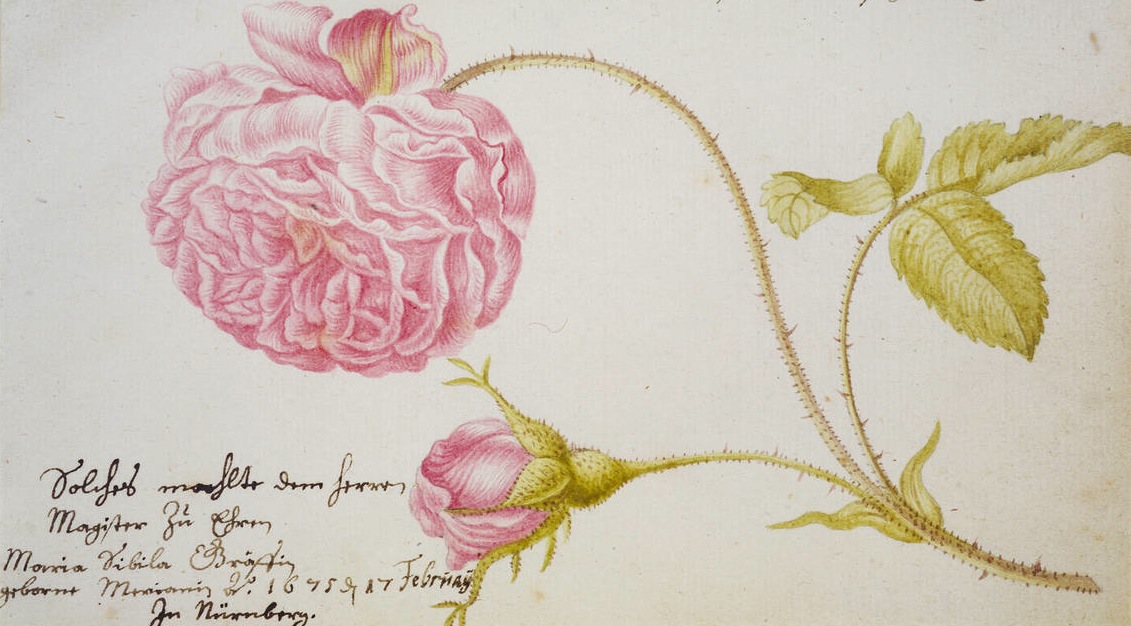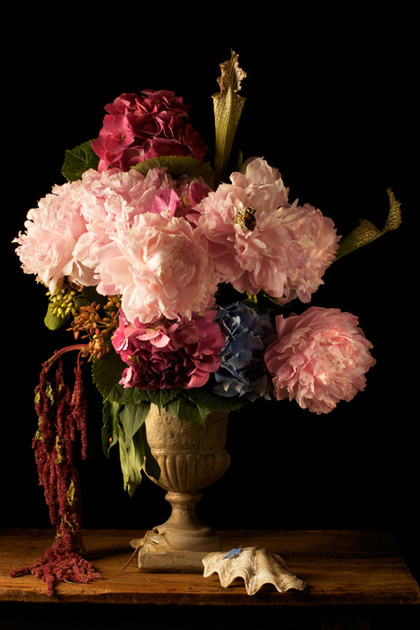Peonies
Four hundred years may span the period that separates the work of contemporary artist, Paulette Tavormina, from the work of the Old Dutch Masters, but the genre of floral still-life painting is ageless. Examining the work of Tavormina affirms the timelessness of Dutch flower still lifes, as well as how their impact has stood the test of time. Instead of a paintbrush, Tavormina utilizes a camera to capture the brilliance of elaborate floral arrangements. The inspiration for her still-life photographs can most assuredly be traced to seventeenth-century Dutch flower still-life painters. In many of her photographs, Tavormina directly quotes the Dutch masterpieces with her choice of flowers, their organization and relation to one another, and their association with inanimate objects placed around them. Whether from a family garden or from the farmer’s market, Tavormina compiles her specimens in way that delightfully harkens back to the traditions of Dutch collectors and painters. Tavormina’s photograph, Peonies, poignantly merges encyclopedic knowledge about nature with personal meaning and experience. According to Tavormina, this photograph could serve as her self-portrait (note 1). Peonies happen to be her favorite flower, which transforms this particular image into a personal narrative. Soft and fluffy puffs of pale pink flowers are the first to emerge from the photograph’s two-dimensional surface. Their light, cotton-like texture leaves the viewer wanting to reach out and touch them. From the great depths of the black background, however, these pale pink flowers do not stand alone, and the viewer soon notices other flower varietals in the stone vase. An off-white seashell rests on the wooden table in the immediate foreground of this image, and a blue hydrangea petal has just landed on the shell’s wavy surface, resembling a teardrop falling to the ground. The sharpness and high resolution of this image breathes life into the flowers and blurs the line between reality and art. Floral painters of the seventeenth and eighteenth centuries also blurred the line between reality and art but used a paintbrush instead of a camera. Without a doubt, Tavorrmina’s crisp and clean photographs generate a rich dialogue with the work of the Old Dutch Masters.
For a moment, it seems as though the viewer looks directly at the vase of flowers in Tavormina’s Peonies. Reality soon disrupts this fantasy, however, and reminds the viewer that the flowers, in fact, only exist on the surface of a printed photograph. In an essay entitled The Many Lives of Paulette Tavormina’s Still Lifes, Wayne Andersen addresses the issue of the photographic medium and purports that “still life photographs are not pictures taken by a camera. The photographer makes the picture and tells the camera how to take it. The camera, not the subject, is told to be still and not even think, just look. Then the life of the still life that is about to become eternal (forever a photograph) is cut short by a blink of a camera’s eye” (note 2). A camera captures a lived moment and preserves it within the four borders of a picture’s frame. For Tavormina, photography offers a way to savor an instance and preserve a moment in time (note 3). Contrary to the artist and his paintbrush, the camera captures the subject placed in front of its lens just as it appears, with no modifications to its form. Photographs are imprints of reality, and thus convey truth. Therefore, for works such as Peonies, greater emphasis must be placed on the process by which Tavormina creates the subject before her camera’s lens, for it is there, before the shutter ever clicks, that the making of her photos take place. This 2009 photograph undoubtedly immortalizes the long afterlife of the flower still-life traditions of the seventeenth and eighteenth centuries, and it espouses for the continuation of a culture of cultivation in the twenty-first century.
Notes:
note 1. "Paulette Tavormina." Telephone interview. 16 Apr. 2014. (11:30-12:00 PM)
note. 2. Andersen, Wayne V. "The Many Lives of Paulette Tavormina's Still Lifes." Paulette Tavormina. Paulette Tavormina. Web. 16 Apr. 2014. <www.paulettetavormina.com>.
note 3. "Paulette Tavormina." Telephone interview. 30 Apr. 2014. (4:30-5:30 PM)

